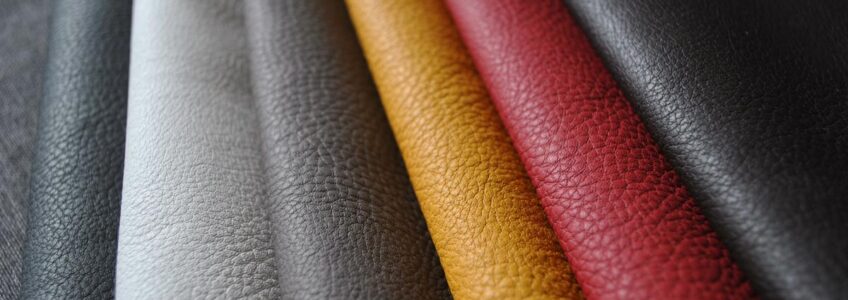In the fabrics industry there is a lot of confusion when it comes to leather, eco-leather and synthetic leather. Let’s try to make clarity out of this situation by focusing on the advantages of using a very versatile fabric such as stretch eco-leather.
Leather: different ways to tan the material of animal origin
Leather fabrics, understood as real leather or genuine leather, is a material of animal origin, which can be chrome tanned, using chromium salts, or vegetable tanned, by using raw natural materials derived from the tannins contained in leaves, barks and fruits. Leather is an extremely resistant material and offers significant advantages: it promotes perspiration, preventing the development of fungi, mold and microorganisms that proliferate in particularly humid environments. Not only that, leather also has heat-insulating properties and is a good electrical conductor.
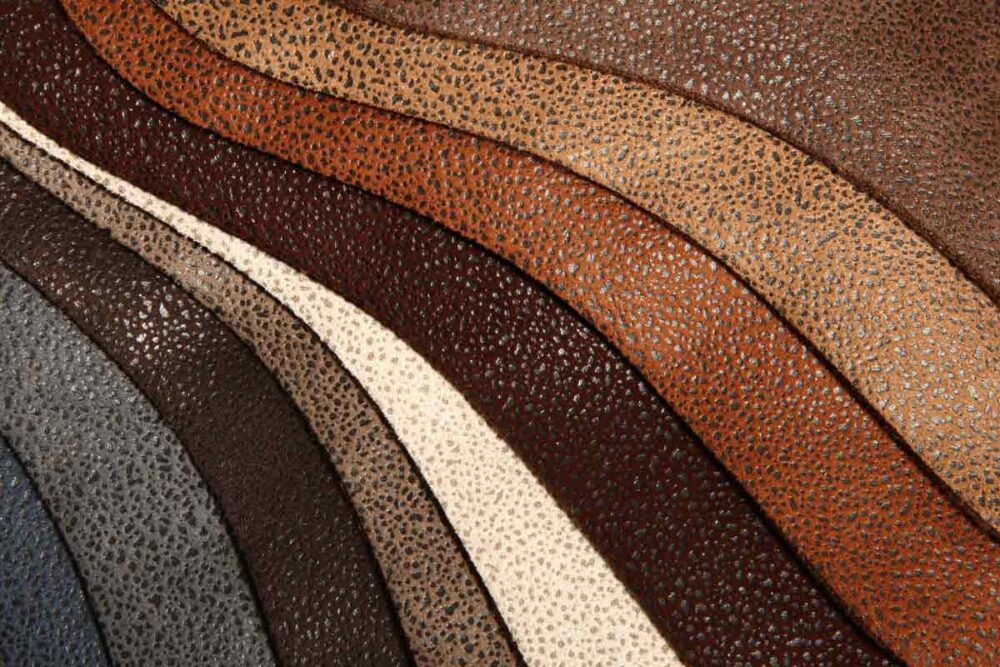
Eco-leather: environmentally friendly produced
Eco-leather, is real leather of animal origin, but tanned with methods that are environmentally friendly, in compliance with the UNI 11427: 2011 standard. This standard establishes that eco-leather must be produced following a protocol that does not harm the environment.
Eco-leather does not have an even coloring: it has many imperfections and natural markings, but it is also soft and resistant. It requires constant maintenance to ensure that its appearance remains unchanged over time, but it requires many precautions when used – one should avoid exposing this fabric to the sun to avoid sudden color changes. For example, stretch black eco-leather exposed to the sun tends to discolor very easily.
Synthetic Leather: imitation leather that has multiple uses
Synthetic leather, also called imitation leather, looks like real leather but has no animal origin. It is generally obtained from purely synthetic materials such as polyurethane (PU) and polyester (PL). In current terminology, when talking aboutelastic eco-leather it is often equivalent to talking about elastic synthetic leather, although it is important to keep in mind that in the first case it is a fabric of animal origin.
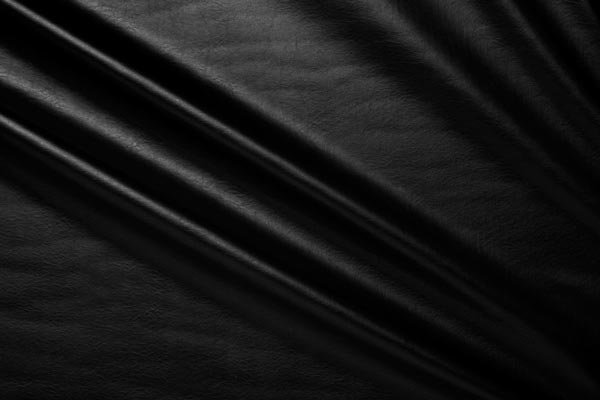
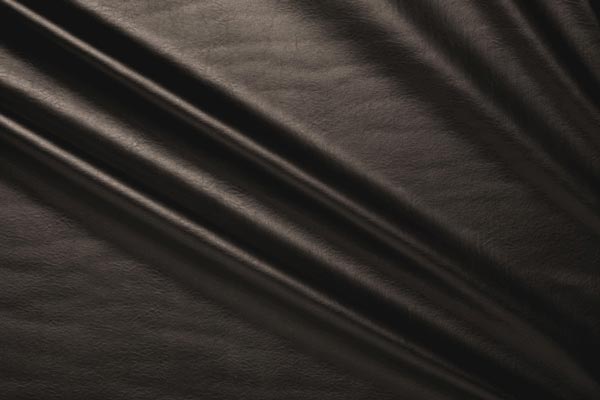
Stretch Leather fabric: the characteristics and processing
How is synthetic leather produced? A film of plastic material is spread on a cotton canvas or synthetic fiber. Marks are then imprinted on this film, the so-called wrinkles, typical of real leather.
Depending on the type of processing, the various types of leather can be more or less elastic. Thestretch eco-leather fabric is widely used in clothing and furniture, but a growing demand can be noted in the market for elastic imitation leather, considered as a more ecological option that does not involve exploiting animal.
Stretch Leather fabric: advantages and uses
Stretch leather is an artificial fabric which offers many advantages. Most important of all is the enormous convenience in price when compared to other types of leather, but it is also much easier to clean and care for. Stretch leather is also water-repellent and resistant to light and heat.
Genuine leather and eco-leather are fabrics that are not frequently used in the furniture industry since they require constant care and have a high pricing. More often, interior designers are choosing synthetic leather upholstery for furnishing elements that are the main piece of furniture in a room, such as sofas, armchairs, and various seating arrangements.
Stretch leather is mainly used to create trendy and fashionable clothing, such as trousers, jackets and different types of accessories.
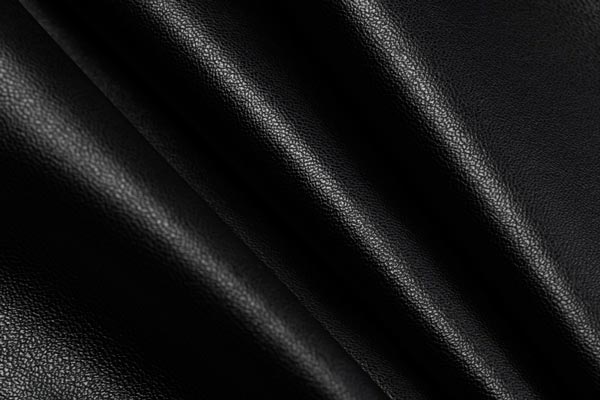
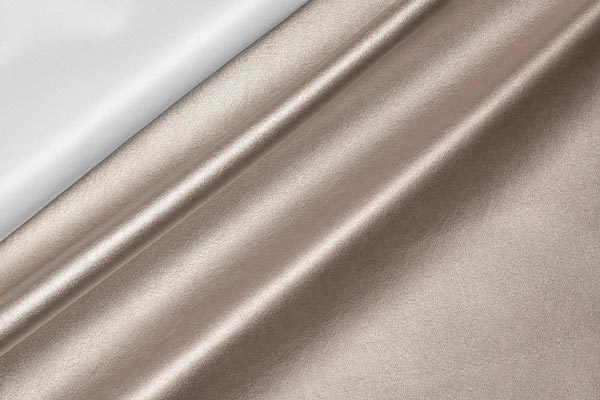
How to treat stretch leather: washing and maintenance
Cleaning elastic synthetic leather is easy, yet still requires some specific precautions. Regular cleaning can be done with a soft microfiber cloth that removes dust daily. For a deeper cleaning we do not use bleach and solvents, but a solution of warm water and neutral soap that is rinsed off well at a later stage. Clothes and accessories made of elastic synthetic leather can be washed with water, but it is preferable to wash them by hand and avoid the use of the dryer.
To remove the hardest to remove dirt one can use steam and then wipe the item with a soft cloth. Against stains we recommend vinegar, dry soap and isopropyl alcohol, while for ordinary maintenance with which we make the leather soft and shiny, we use cleansing milk or a specific product. Proper cleaning ensures greater durability of the material over time.
From the choice of fabric to advice on how to properly use the various types of fabric: each material has intrinsic characteristics that should be enhanced in order for it to shine, whether as a piece of furniture or as the main component of a timeless garments, to be worn every new season.
Manifattura Foderami Cimmino stands out as one of the main distributors of high-quality fabrics which can be used in many different industries. From clothing to furniture, stretch synthetic leather is widely used for its characteristics and convenience. The experience gained over many years has allowed the company to diversify its offers in fabrics according to the different needs of the many industries that turn to Cimmino to choose the best materials.



